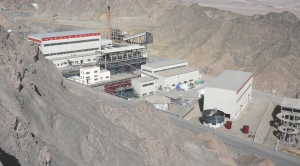VANCOUVER — Although its yearend numbers and production forecasts suggest Eldorado Gold (ELD-T, EGO-X) is catching up to the majors, Eldorado chief financial officer Earl Price says: “We actually like flying under their radars.”
But with record gold production of 308,000 oz. reported for 2008 and a larger strategy to reach 700,000 oz. gold by 2013, Eldorado may soon begin to register on some radar screens. In its year-end update, Eldorado outlines bold designs to pour more than 325,000 oz. gold in 2009 and 400,000 oz. gold in 2010.
At Kisladag in Turkey, Eldorado’s biggest mine in terms of both production and reserves and resources, the company expects to ramp up production to 230,000- 240,000 oz. gold at a cash cost of around US$265 per oz. In 2008, Eldorado produced 190,000 oz. gold at a cash cost of US$254 per oz. gold.
And the Kisladag open-pit mine has plenty of life left in it. Eldorado began operations in 2006 based on a 15-year mine life and in 2007 pegged its reserves at 153 million tonnes grading 1.12 grams gold per tonne for about 5.5 million contained ounces gold. Measured and indicated resources came in at 255 million tonnes grading 0.95 gram gold for about 7.8 million oz. gold.
The planned production increase in 2009 at Kisladag will also make up for falling output at Eldorado’s Tanjianshan mine in China.
In 2008, its first full year of operation, Tanjianshan produced 118,000 oz. gold at cash costs of US$261 per oz. But as Eldorado moves into refractory ore this year at the mine, output will fall and costs will rise. In 2009, Eldorado forecasts production to range between 95,000 and 100,000 oz. gold at a cash cost of US$385 per oz.
Eldorado began production at Tanjianshan in 2007, making it the first North American gold producer in China, and dispelling the notion that you can pour money into China, but you won’t get it back out.
In 2007, it calculated a reserve there of 7.3 million tonnes grading 3.96 grams gold for 934,000 oz. gold and a measured and indicated resource of 10.9 million tonnes grading 3.44 grams gold for 1.2 million oz. gold. Tanjianshan is an open-pit mine with a nine-year mine life.
It is in 2010, however, when Eldorado plans the most significant bump to production. It expects its second mine in Turkey, the Efemcukuru project, will come on-stream that year.
Eldorado estimates capital costs at the project at US$142 million and a mine life of just over nine years. In 2009, Eldorado says it will spend around US$85 million on the project, forecasting that the mine will add 80,000 oz. gold to its production sheet in 2010, potentially bringing total production that year to more than 400,000 oz.
Efemcukuru hosts reserves of 3.8 million tonnes grading 10 grams gold for 1.2 million oz. and measured and indicated resources of 4.1 million tonnes grading 11.01 grams gold for 1.4 million oz.
Efemcukuru, which Eldorado is now building, will be an underground mine with two opposing portals intersecting ore at mid-depth. The mine will employ trackless, mechanized cut-and-fill and long-hole stoping, relaying ore to surface via a conveyor. Processing will entail a traditional semi-autogenous grinding/ball mill, gravity and flotation, and then shipment to its Kisladag facilities.
Not all has gone smoothly at Efemcukuru, however. A case in Turkish courts challenged Efemcukuru’s environmental assessment and cast some doubt over the project’s future. But at the end of January, Eldorado received good news; the court ruled in its favour, affirming the validity of Efemcukuru’s environmental certificate.
Beyond 400,000 oz. gold in 2010, Eldorado plans to nearly double production to 700,000 oz. gold a year by 2013.
Price says two projects are at the core of that vision: Tocantinzinho (TZ) in Brazil and Perama Hill in Greece. Both have their challenges.
“We call the TZ project ‘technical’ and the Perama Hill project ‘social’,” he says.
The challenges at the TZ project relate to location; TZ is a 430- sq.-km land package in the state of Para, smack-dab in the middle of the Amazonian jungle. So he says dealing with power and infrastructure will be the primary issues.
As for Perama Hill, Price explains that the challenge there will be to impress upon the locals that Eldorado is a responsible mining company. Although he says the government in Greece is largely supportive of mining, as in Turkey, “the rule of thumb is if you don’t have the support of locals then you don’t have a mine.”
To that end, Price says Eldorado is taking pains to build up a good Greek staff and meet with government officials in Athens.
More importantly, he says it is going to be critical to make sure Eldorado develops solid relationships with locals and demonstrates to them that the company is not going to come in and destroy their land.
“You have to show them that you’re not just a bunch of fly-bynighters,” Price says.
Because the two projects are as far off on the horizon as they are, and given their technical and social challenges, Price says it is difficult to judge which one might reach a production decision first. Nonetheless, Eldorado is clear on what it eventually hopes they will turn into.
“These projects have the potential to increase Eldorado’s production by 250,000 ounces of gold annually by 2013,” the company writes on its website.


Be the first to comment on "Eldorado Aims For 400,000 Oz. Gold Production In 2010"